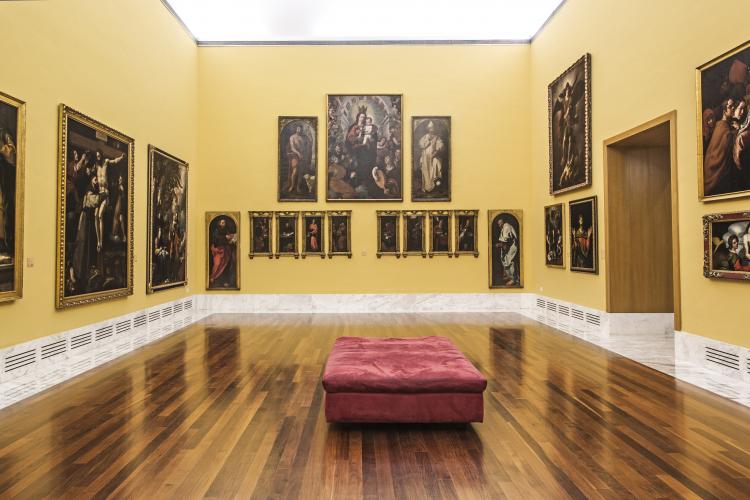Countries<Spain<Comunidad Valenciana<Valencia< Museo de Bellas Artes de Valencia
The Fine Arts Museum of Valencia is the second largest art gallery in Spain with works from the 15th to the 19th centuries, where the rooms dedicated to Sorolla and the one dedicated to Francisco de Goya stand out. The rooms of Gothic works are impressive and those of the painters and sculptors Pinazo and Benlliure are very representative of the Valencian school. The museum is also outstanding for its collection of paintings of this style in Spain. Also not to be missed is the Patio del Embajador Vich and the unpublished work of Velázquez.
The historic building that houses the museum was originally the San Pío V Seminary School, founded in 1683 by the archbishop of Valencia, Friar Juan Tomás de Rocabertí. It was designed by the architect Juan Bautista Pérez Castiel, master builder of the Cathedral. It was built between 1683 and 1744, although part of the church was demolished in 1925. The building has had different uses: Military Academy of Cadets, Charity House, army supply store, Military Hospital, until 1946, when it was chosen to house the Museum of Fine Arts.
The artistic tour begins with the selection of the so-called Valencian Primitives, which spans from the end of the 14th century to the beginning of the 16th century, with such representative artists as Alcanyís, Nicolau, Jacomart and Reixach, among others. Also worthy of note is the Valencian school with Joanes, the Ribalta family, Espinosa, Vicente López, Sorolla, Pinazo and others. There are also works by Pintoricchio, Andrea del Sarto, Van Dyck, Murillo, Velázquez, El Greco and Goya. It also has a large collection of drawings and engravings, as well as sculptures, archaeological pieces, architectural fragments and some examples of movable art.
El Museo de las Bellas Artes de Valencia es la segunda mayor pinacoteca de España con obra de los siglos XV al XIX, donde destacan las salas dedicadas a Sorolla, así como la destinada a Francisco de Goya. Son impactantes las salas de obra Gótica y muy representativas de la escuela valenciana las de los pintores y escultores Pinazo y Benlliure. El museo sobresale además por la colección pictórica artísticas de este estilo en España. No hay que perderse tampoco el Patio del Embajador Vich y la obra inédita de Velázquez.
El edificio histórico que aloja el museo fue en origen el Colegio Seminario San Pío V, fundado en 1683 por el arzobispo de València fray Juan Tomás de Rocabertí. Sus trazas se deben al arquitecto Juan Bautista Pérez Castiel, maestro de obras de la Catedral. La construcción se realizó entre 1683 y 1744, aunque su iglesia fue demolida en parte en 1925. El edificio ha tenido diferentes usos: Academia Militar de Cadetes, Casa de Beneficencia, almacén de provisiones del ejército, Hospital Militar, hasta que en 1946 fue elegido para ser la sede del Museo de Bellas Artes.
El recorrido artístico se inicia con la selección de los llamados Primitivos Valencianos, que abarca desde finales del siglo XIV hasta principios del XVI, con artistas tan representativos como Alcanyís, Nicolau, Jacomart y Reixach, entre otros. También es de señalar la escuela valenciana con Joanes, los Ribalta, Espinosa, Vicente López, Sorolla, Pinazo y otros. Asimismo hay obras de Pintoricchio, Andrea del Sarto, Van Dyck, Murillo, Velázquez, El Greco y Goya. Cuenta además con un amplio fondo de dibujos y grabados, además de esculturas, piezas arqueológicas, fragmentos arquitectónicos y algunos ejemplos de arte mobiliar
